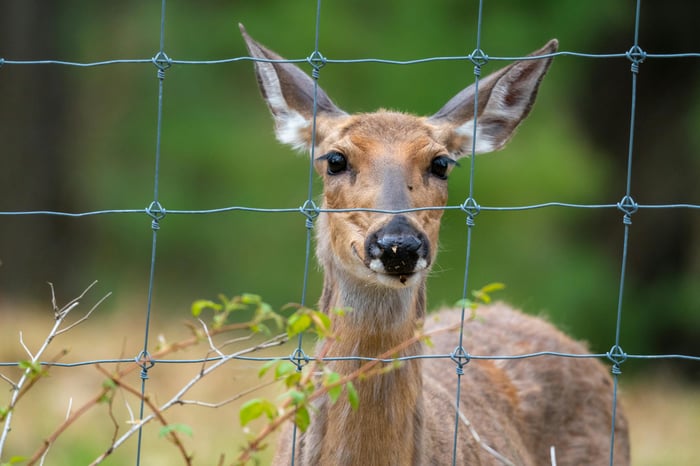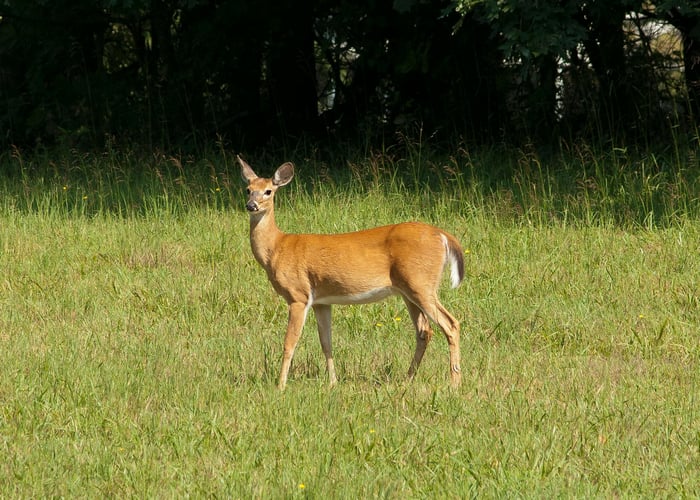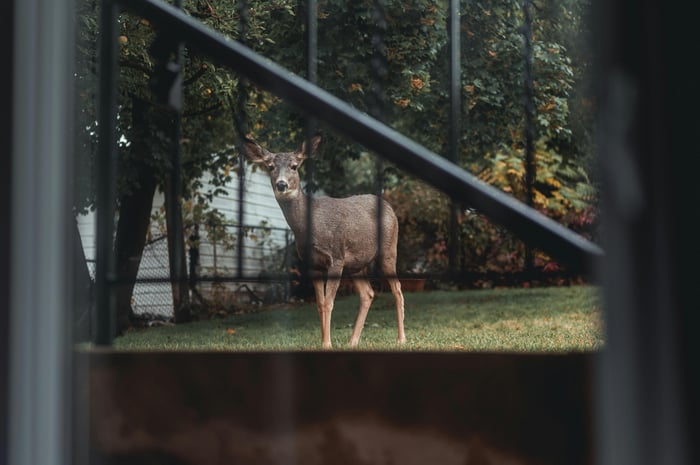
How To Keep Deer and Nuisance Animals Out of Your Yard: A Complete Guide
A well-kept yard can quickly become a magnet for unwanted wildlife. From deer nibbling on your garden to raccoons rifling through trash bins, these uninvited guests can cause real damage. If you’ve noticed chewed plants, scattered debris, or strange animal tracks, it’s time to invest in some protective measures. With the right strategy, you can protect your outdoor space efficiently and without harm.
Why Deer and Other Animals Invade Your Yard
Wild animals don’t just show up in your yard by accident. Most of the time, they’re looking for food, water, or shelter. To them, your yard might have exactly what they need. Deer are often drawn to gardens full of fruits, vegetables, and flowers, while raccoons and skunks may sniff out your trash cans or compost bins. Bird feeders, pet food bowls, ponds, and shady spots can also attract all kinds of critters.
Animal activity changes with the seasons, too. In spring, deer look for quiet places to care for newborn fawns. Summer is prime time for animals to eat as much as they can before fall and winter. As the weather cools, some animals migrate or prepare for hibernation — both of which can lead them right into your space. The more you understand what brings wildlife in, the easier it is to keep them out.
Barriers That Keep Animals Out of Your Garden and Yard
It may seem overly simplistic, but one of the best ways you can prevent wild animals from destroying your yard is if there is something that is physically in the way, deterring them from entering. The right setup can keep everything from hungry deer to burrowing groundhogs away from your plants.
Deer Fencing
Deer can jump high, so your fence needs to be at least eight feet tall to keep them out. The type of material you choose affects how well the fence performs and how long it lasts. There are two common types of deer fencing to consider:
Poly fencing: Lightweight, UV-resistant, and easy to install. Best for low-pressure areas or garden enclosures.
Metal fencing: Stronger and more durable. Ideal for large properties or places with frequent deer activity.
Both poly and metal options can offer long-lasting results, especially when you choose a high-quality product designed specifically for deer control.
Netting and Garden Covers
Lightweight netting and covers are great for keeping out smaller animals like rabbits, squirrels, and birds. These can be draped over garden beds, shrubs, or fruit trees to prevent nibbling without using harsh methods. They’re especially useful during peak growing seasons.
Raised Garden Beds and Enclosures
Lifting your garden off the ground adds a layer of protection. Raised beds with small surrounding fences help block foraging animals like groundhogs, opossums, and chipmunks. Adding a wire mesh bottom can also stop burrowers from tunneling in from below. If you need to protect a raised bed from all sides, look into wire garden enclosures that allow your plants to get plenty of light.

Natural Deterrents and Repellents For Large Animals
Scent-Based Repellents
Many animals have sensitive noses. Commercial sprays and granules often use ingredients like predator urine, garlic, or rotten eggs to make areas less appealing. You can also make your own with household items like hot pepper flakes, vinegar, or crushed garlic.
While effective, these solutions tend to be short-lived and may need to be reapplied regularly — particularly after rainfall or every few weeks.
Plants That Repel Deer and Wildlife
Some plants naturally repel animals due to their strong scent or texture. Lavender, yarrow, daffodils, marigolds, and rosemary are good options. When used along borders or near vulnerable plants, they can create a natural buffer that’s less attractive to grazers.
Noise and Light-Based Deterrents
While not foolproof, sound and light can startle animals that are easily spooked. Try wind chimes, motion-activated lights, reflective tape, or even hanging pots and pans from a clothesline. These tools work best as supplements to fencing and repellents, especially for nocturnal visitors like deer or raccoons.
Landscape Modifications That Keep Animals Out
Sometimes the best defense is making your yard less appealing in the first place. Minor changes to your landscape can go a long way in discouraging wildlife from visiting or staying.
Remove Attractants
Animals go where food is easy to find. Securing trash bins, cleaning up fallen fruit, and carefully covering compost piles can help eliminate easy meals. If you store any pet food outside, you should also find a new storage place — it’ll draw in unwanted visitors.
Habitat Disruption
Wildlife also seeks out places to hide and nest. Overgrown hedges, brush piles, and low-hanging branches offer ideal cover. By trimming vegetation and clearing debris, you remove the cozy hiding spots that make your yard a temporary home for raccoons, skunks, and other animals.
Protective Planting Zones
Incorporating thorny, strong-scented, or unpalatable plants along the edges of your yard can make the space less inviting. Deer, for instance, are less likely to cross borders filled with holly, barberry, or fragrant herbs they dislike.
Long-Term Strategies For Keeping Pests Out of Your Yard
Wildlife can be persistent, so maintaining a long-term plan is just as important as short-term fixes. Success often comes from consistency, observation, and a little creativity.
Routine and Rotation
Animals can become used to static deterrents over time. Switching up the location of motion lights, scent repellents, or scare devices helps keep them effective. If you switch up your methods, wildlife will be less likely to adapt to your methods.
Observe and Adjust
Every yard is different, and so is the wildlife that visits it. Installing a trail camera or looking for signs like tracks or droppings can help you understand what animals are coming through and when. With that knowledge, you can tailor your prevention plan to target the most active species in your area, improving results and minimizing effort.

Keep Deer Out. Keep Your Yard Yours — With Deerbusters
Keeping deer and nuisance animals out of your yard doesn’t have to be a constant battle. With the right mix of fencing, deterrents, and smart landscaping, you can reclaim your outdoor space and protect what you’ve built. At Deerbusters, we specialize in proven, long-term solutions that keep wildlife where they belong—outside your property line.
Whether you’re dealing with curious deer or persistent groundhogs, our professional-grade fencing and expert advice can help you find the right fit for your yard. Give us a call at 888-422-3337 or get a free quote online today!.
FAQs About Animal-Proofing Your Yard
How Do I Keep Deer Out of My Yard Without a Fence?
You can discourage deer by using strong scent-based repellents (like garlic, hot pepper spray, or commercial deer deterrents), planting deer-resistant shrubs, and using motion-activated sprinklers. These tools create an unpredictable and uncomfortable environment for deer, but for high-traffic areas, fencing is still the most reliable option.
What Scent Will Keep Animals Away From My Yard?
Many wild animals dislike strong smells like garlic, peppermint, ammonia, and predator urine (available commercially). These scents can be used in sprays or soaked into cotton balls placed around your garden. Rotate them regularly so animals don’t get used to the smell.
Do Motion-Activated Sprinklers Work on All Wildlife?
They’re most effective on skittish animals like deer, raccoons, and stray cats. The sudden movement and burst of water startle intruders and train them to avoid the area. However, persistent animals like groundhogs may need additional deterrents.
What’s the Best Way to Deter Rabbits and Groundhogs?
Low fencing, mesh garden covers, and raised beds work well. These animals often dig, so it helps to bury the bottom edge of your fencing at least 6–12 inches deep. Natural repellents and regular yard maintenance (like trimming brush) also reduce their interest in your space.
Is It Legal to Relocate Wild Animals From My Yard?
Regulations vary by state and species. In many areas, relocating wildlife without a permit is illegal. It’s best to check with your local wildlife agency or extension office before attempting to trap or relocate any animal.
